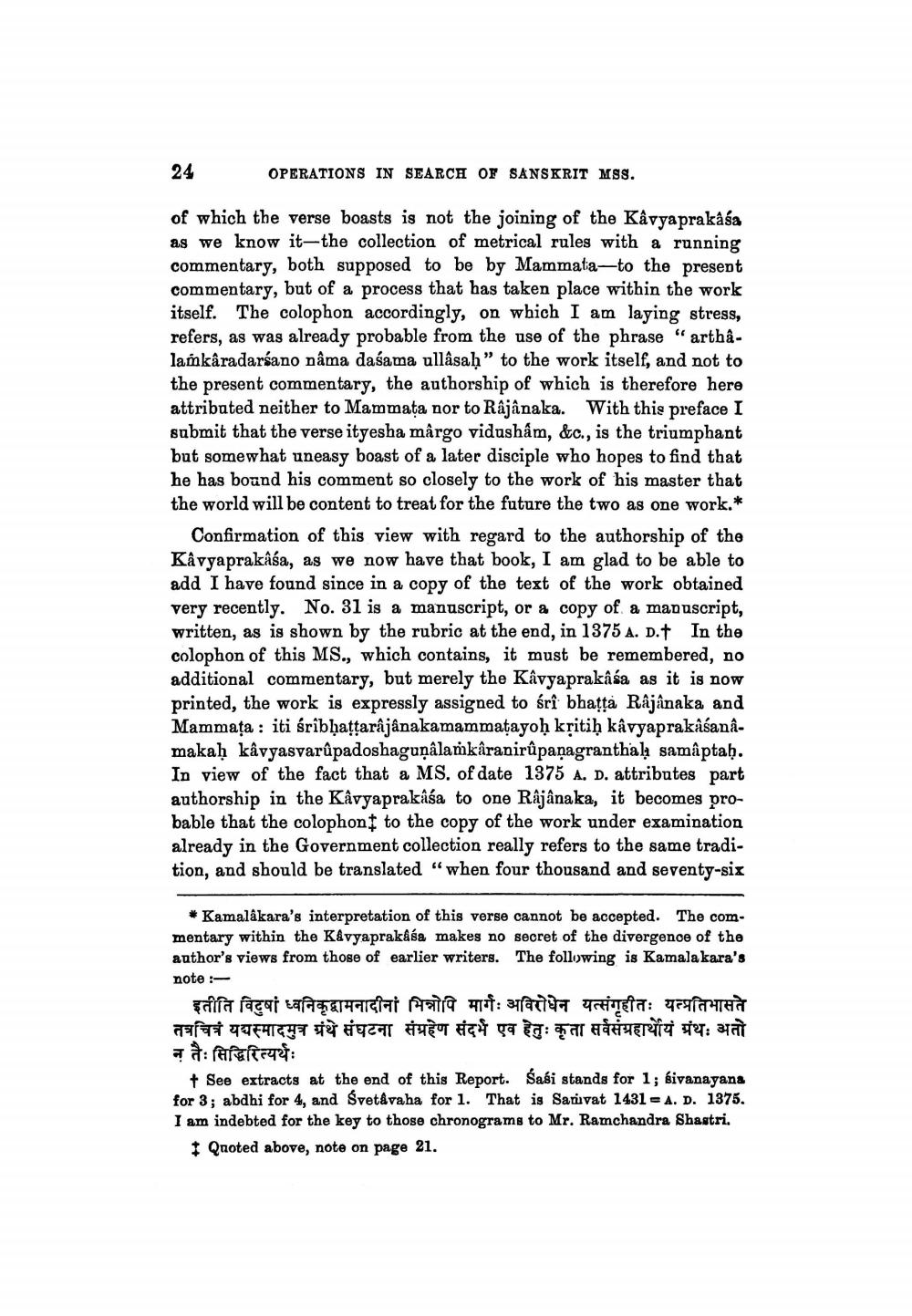________________
24
OPERATIONS IN SEARCH OF SANSKRIT MSS.
of which the verse boasts is not the joining of the Kâvyaprakasa as we know it-the collection of metrical rules with a running commentary, both supposed to be by Mammata—to the present commentary, but of a process that has taken place within the work itself. The colophon accordingly, on which I am laying stress, refers, as was already probable from the use of the phrase "arthalamkâradarśano nama daśama ullâsah" to the work itself, and not to the present commentary, the authorship of which is therefore here attributed neither to Mammata nor to Râjânaka. With this preface I submit that the verse ityesha mârgo vidushâm, &c., is the triumphant but somewhat uneasy boast of a later disciple who hopes to find that he has bound his comment so closely to the work of his master that the world will be content to treat for the future the two as one work.*
Confirmation of this view with regard to the authorship of the Kavyaprakása, as we now have that book, I am glad to be able to add I have found since in a copy of the text of the work obtained very recently. No. 31 is a manuscript, or a copy of a manuscript, written, as is shown by the rubric at the end, in 1375 A. D.T In the colophon of this MS., which contains, it must be remembered, no additional commentary, but merely the Kâvyaprakasa as it is now printed, the work is expressly assigned to śrî bhatță Râjânaka and Mammața : iti sribhattarâjânakamammatayoh kritih kavyaprakasanâmakah kavyasvarûpadoshagunâlankâranirûpaņagranthala samâptah. In view of the fact that a MS, of date 1375 A. D. attributes part authorship in the Kâvyaprakása to one Râjânaka, it becomes probable that the colophons to the copy of the work under examination already in the Government collection really refers to the same tradition, and should be translated “when four thousand and seventy-six
* Kamalakara's interpretation of this verse cannot be accepted. The commentary within the Kávyaprakása makes no secret of the divergence of the author's views from those of earlier writers. The following is Kamalakara's note :
इतीति विदुषां ध्वनिकद्वामनादीनां भिन्नोपि मार्गः अविरोधेन यत्संगृहीतः यत्प्रतिभासते तत्रचित्रं यद्यस्मादमुत्र ग्रंथे संघटना संग्रहेण संदर्भ एव हेतुः कृता सर्वसंग्रहार्थोयं ग्रंथ: अतो न तैः सिद्धिरित्यर्थः
+ See extracts at the end of this Report. Sasi stands for 1; sivanayana for 3; abdhi for 4, and Svetávaha for 1. That is Saruvat 1431 = A. D. 1375. I am indebted for the key to those chronograms to Mr. Ramchandra Shastri.
Quoted above, note on page 21.




